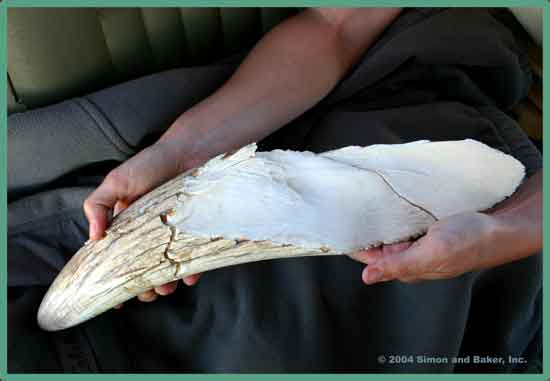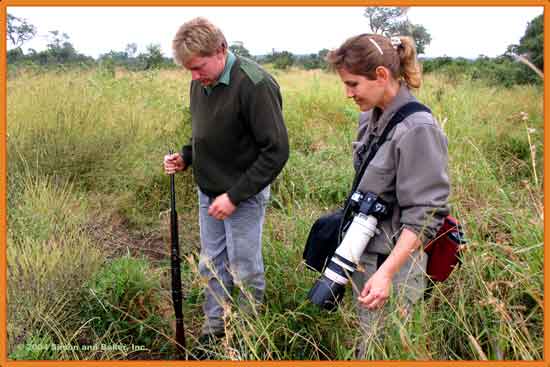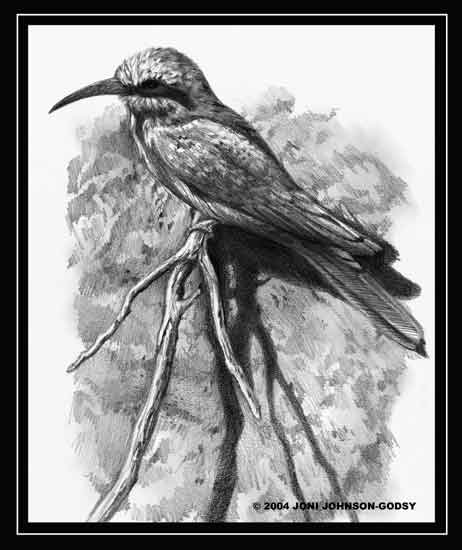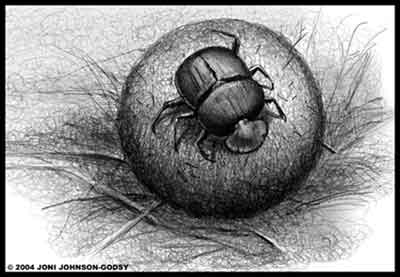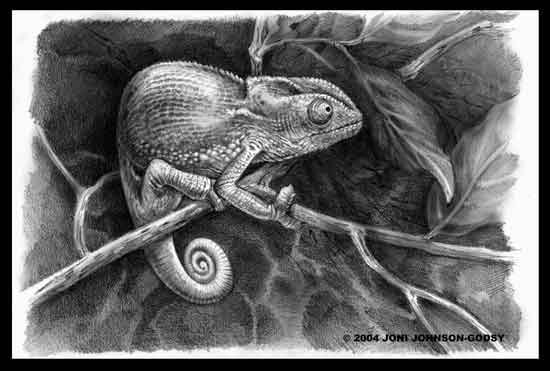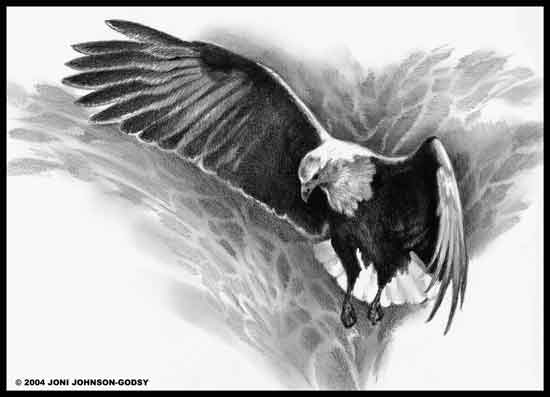THE CLASH OF TITANS There are certain things that are generally accepted among those who study elephants, one of which is that size matters. Typically, the larger an elephant is the higher his status. This is especially true with bulls. It is correct protocol for smaller juvenile bulls to defer to the big boys, giving them first rights at water holes and food sources and making sure they have plenty of space. But in nature, rules are made to be broken. We were about to witness an amazing example of just that. We were enjoying the antics of two very large bull elephants as they hosed themselves off at the edge of a small waterhole in the Nxai Pan. They stood side by side, almost merging together as if they were one great two-trunked animal. Each clearly enjoyed the company of the other and they seemed to be quite familiar with one another. All was placid in the afternoon sun of the Kalahari on this bright beautiful day. These boys owned the waterhole, at least for now. Suddenly, coming from out of nowhere a smaller bull burst onto the scene from the left of our view. He passed us without hesitation taking only temporary notice of our vehicle, with ears flaring and trunk lifted to air scent as he strode briskly by. He clearly had more important things on his mind. The young bull marched boldly with great purpose on stiff legs, with the entirety of his attention now focused on the two huge bulls at the waterhole. I was amazed at how much ground an elephant can cover in one stride, especially when he has trouble to stir up.
The two large bulls suddenly noticed this angry intruder and to our surprise began a hasty retreat from their watery paradise. But they were not as fast as he. The next thing we knew we were witnessing a great face off between giants, two against one. The bulls were all angry now and flared their huge ears at each other in impressive display as the face off continued, the two bigger bulls still in a pair facing the small one. It seemed that the smaller aggressor had focused his attention on one of the big boys in particular.
The impact of the great crash between two titans could be felt throughout our entire bodies, as much as heard. It was a violent, slow motion collision of colossal power that seemed to silence the world. An enormous cloud of dust took command and obscured everything from our sight, even the three massive creatures that created it. A gleaming white shape flew through the air and disappeared again into the great cloud. When the dust settled enough to see again, we noticed the two huge bulls running away as fast as elephants’ legs will carry them. One of them in particular was now very far in the distance. His was an especially hasty retreat. We could see that the smaller bull was still after them but his pace had slowed, as his mission clearly had been accomplished. To our surprise he never returned to the water hole. He simply slowed his stride to a walk and drifted off into a sea of brush and dust. Alan was sure that he saw ivory flying through the air during the great collision. We went over to the area where this conflict took place to have a closer look. Sure enough, there it lay in three pieces on the dry Kalahari ground, the broken tusk of the largest bull gleaming in the desert sun. He was indeed the one who had made the most desperate dash for safety. The small bull had succeeded in his mission, although we were unclear on what that mission was. His commanding presence and determination over rode his small size. He was not to be underestimated, not by anyone. There now was a new king in the Nxai Pan.
Pieced back together, the broken tusk of a great Nxai giant THE SCATTERING OF GREAT POWER Anyone fortunate enough to travel through the African bush on foot gains an even deeper connection to this wild land than can ever be experienced by Land Rover. You develop a greater appreciation for the small things and pay closer attention to the variety of plants that make up the bush, most of which wear long formidable thorns. Now that we were on foot, animals that ignored the Land Rovers we had been riding in, regarding them as groaning, rolling boxes on wheels, saw us as Homo Sapien, the most frightening creature on the planet. We were not likely to get very close to any animal or bird who knew we were there, and they are keener about such things than we are.
Joni with Bush guide Peter, looking at animal tracks in the sand, Kruger National Park, South Africa
Alan and Joni backpacking in Kruger National Park We had the great fortune to hike and even back pack in Kruger Park with a camp guide that specializes in safaris on foot. We knew that while we were hiking, the animals would make themselves scarce. To their sensitive noses humans are a bit pungent, with shampoos and deodorants that are very foreign smelling in their wild world. But in spite of this we had an unexpected and quite dramatic encounter on a hike one morning that will stay in my mind for a very, very long time: It was 4:30 a. m. I was awakened in the cold, dark stillness of our tent by a peculiar repetitious sound outside. This odd noise seemed strangely familiar, like a vocalization perhaps made by a cow. But there was something slightly different about it, and besides, cows are not a part of the Kruger Park landscape. There was an odd desperation to the sound and it lingered on for about half an hour. Then there was silence. I drifted off again into a deep sleep.
African sunrise We arose early that morning as usual. Our plan for early in the day was to hike and explore the area surrounding our camp. We set off in the cold chill of the African winter morning. We had not hiked far through dry waist high grass, when we were halted by a spine tingling sound. Piercing the hush of the new day was the fierce fighting of a group of lions very nearby. Our guide knew that they were on a kill and that the kill was small. The fighting was so ferocious because there was not much meat. Competition for this meager food was serious and we could hear the group of lions in violent pursuit of any small morsel of meat they could beg borrow or steal. We proceeded quickly and quietly in the direction of the spine tingling sound. We reached an area that was not far from a waterhole where we could perch ourselves on the far side of an enormous, long abandoned termite mound jutting up from the dry ground. The lions were still fiercely fighting in the muck at the waters edge. The roar of a lion can travel for miles. Up close this roar nearly makes your teeth rattle. We stood for awhile staring through the brush at the edge of the waterhole. The lions were down an embankment, obscured from our view and we from theirs. We could see the occasional tail of the great cats when they lashed through the air while still fighting and feeding. This was a primordial battle of life and death, a battle for the simple need to eat. The fighting seemed to go on for a great length of time but in reality it was most likely only minutes. Suddenly, as though a shot had been fired, the lions flew away from their meager meal and leapt out in every direction. There were six of them, all lionesses and their huge lunging strides were in absolute panic. Three of them shot out away to the left and two to the right. The remaining lioness was coming like a bullet straight at us!
The world seems to contradict itself when extreme danger is upon us. Things happen in the blink of an eye, and yet in our minds they tend to decelerate into a strange, slow dreamlike unreality. The lions were scattering about everywhere, lunging out in huge slow motion bounds. In the confusion it was hard to know where to look. But the one coming right at us, of course, demanded immediate attention. Our guide, wise to such matters did just the right thing at just the right moment. His was a life saving knowledge. With a panicked lioness running straight at us he calmly made a kind of clucking sound just loud enough for our great charging cat to hear. She recognized the location of her human foes and veered off, running in panic from us like all of the others. We stood, silenced in amazement. Once we finally regained steady breathing again we discovered what in the world we had just witnessed. Because we were positioned where the lions could not see or hear us while they were feeding, they were unaware of our presence until our scent finally reached them. This sudden realization that humans were very near, without the cats knowing exactly where put them in panic. They could not locate us by sight or sound. And by the time our scent reached them, our presence was literally right in their faces. When they fled they had no way to know what areas to avoid. The clucking sound created by our guide made the lions aware of our location so they could flee in a direction of safety both for them and of course, for us. With the lionesses thought to be gone, we proceeded down to the edge of the water hole. Almost unrecognizable in the muddy muck at the waters edge was the remains of a Cape buffalo calf, the one I had heard bawling in the pre-dawn morning. This is what was left of the little life that had conspicuously advertised separation from his mother. Lessons are learned the hard way in the bush, and often you only get one chance.
We decided to leave the area so the lionesses could return to finish what was left of their meager meal. We hiked on, knowing that we would return to this spot on our way back to camp. The lionesses did indeed return to their muddy meal and this time they both saw and heard us coming. They were willing to hold their ground now and one of them in particular was intensely guarding her space. She was covered in blood and wet brown muck lacking the regal presence that lions usually have. We kept more of a distance from them this time allowing them the space they needed to feel more at ease. One of the lionesses glared at us through the brush with a low, frightening growling sound pouring out of her. Her tail flicked and twitched and her stare was strong and uncompromising. When her tail finally was still, it was time for us to move on. A still tail on a staring growling lion is nothing but trouble. We left the lions to their business as we drifted away from the drama. Although we were compelled to, we did not turn to look back. WINGED SYMBOL OF DEATH It would hardly be possible for me to write about my experiences in Africa and not say a word about one of my great passions, the vulture. I am unaware of why they intrigue me so, perhaps they represent to me the side of nature that is raw truthfulness. Nature is not always beautiful and glamorous. It sometimes takes on a more primal darkness, which can haunt the deepest, most remote corners of our minds. Perhaps we find vultures unsettling and disturbing because they remind us that living is a very temporary thing. The winged symbols of death are always there to thrive on life’s ending. For them, death is simply an opportunity for the living. Vultures are a reality check for all which we tend to take for granted.
Cape Griffin Vulture WHAT ABOUT THE LITTLE GUYS… In Africa it is the big impressive creatures that usually stir the creative corner of our minds where dreams are born. The slow motion movement of an elephant stirring up dust enough to nearly block the rising sun, or the golden evening light passing softly through a lion’s mane giving him the radiant glow of greatness, or the silhouette of a Kudu bull standing like a great statue of silver-gray stone, or even a row of cape buffalo with their solid might and muscle supporting a wall of sharp horns. These are usually the images that stick solidly in our mind’s eye when we think of classic Africa. But when you look beyond the great ones that are the symbols of this land, you will find small treasures that are as much a part of the African landscape as their larger more impressive counterparts. If the lion is the king of beasts, it is the small creatures that are the jewels that grace his crown. Without the many tiny jewels, the crown would possess no radiance. The following is a tribute to the diminutive ones, the small creatures that help to balance the scale in the African web of life.
White fronted bee-eater
Dung beetle
Chamelian
African fish eagle THE FINAL CURTAIN CALL Another day ends in Africa. Daylight bows her head as she passes the torch of life to the darkness. There is a brief pause when the torch is embraced by both. Fire now burns on the edge of the sky. The great wings of night soon unfurl and blanket this world in a cloak of blackness. As we depart from this place, our beating hearts remain with the rhythm of the wild. The fire from the torch of life lingers on in our minds and in our souls. This is the magic that stays within us forever, this magic that is wild Africa...
|


